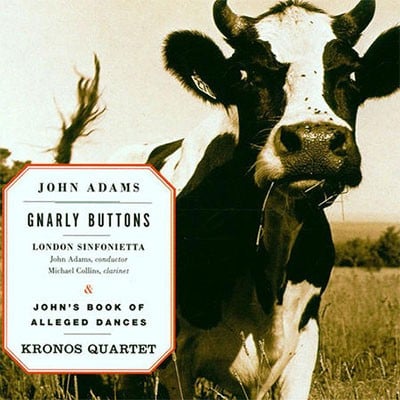corA.bn-trbn-gtr(=banjo/mandolin)-2kbd(I=pft)-strings (min 1.1.1.1.1, max 6.6.4.4.2)
This work requires additional technological components and/or amplification.
For complete technical specifications go to: mhgrey.wordpress.com
Abbreviations (PDF)
Boosey & Hawkes (Hendon Music)
The clarinet was my first instrument. I learned it from my father, who played it in small swing bands in New England during the Depression era. He was my first and most important teacher, sitting in the front room with me, patiently counting out rhythms and checking my embouchure and fingering. Benny Goodman was a role model, and several of his recordings–in particular the 1938 Carnegie Hall jazz concert and a Mozart album with the Boston Symphony Orchestra–were played so often in the house that they almost became part of the furniture.
Later, as a teenager, I played in a local marching band with my father, and I also began to perform the other clarinet classics by Brahms, von Weber, Bartók, Stravinsky, and Copland. During my high school years I played the instrument alongside him in a small community orchestra that gave concerts before an audience of mental patients at the New Hampshire State Hospital.
But strangely enough, I never composed for the instrument until I was almost fifty. By that time my father had died, and the set of instruments I had played as a boy, a Selmer A and B-flat pair, had traveled back and forth across the country from me to my father (who played them until he fell victim to Alzheimer’s disease) and ultimately back to me. During the latter stages of my father’s illness, the clarinets became an obsession for him, and this gentle, infinitely patient man grew more and more convinced that someone was intent upon breaking into his New Hampshire house and stealing them. Finally, one day, my mother found the disassembled instruments hidden in a hamper of laundry. It was the end of my father’s life with the instrument. The horns were sent to me in California where they grew dusty and stiff, sitting in a closet. But I brought them out again when I began to compose Gnarly Buttons, and the intimate history they embodied, stretching from Benny Goodman through Mozart, the marching band, the State Hospital to my father’s final illness, became deeply embedded in the piece.
The scoring underlines the folk and vernacular roots of the music: a banjo player (who also plays mandolin and guitar); a trombone, two low double reeds (English horn and bassoon); piano; two samplers playing a variety of sounds including sampled accordion, clarinet, and cow; and strings (either solo or multiple). The third movement, "Put Your Loving Arms Around Me", harkens back to the "Chorus of Exiled Palestinians" in its extreme simplicity: a diatonic melody set against a strummed continuum of chords. This idea became the basis for a much larger exploration in the 1998 work for large orchestra, Naïve and Sentimental Music. The "naïve" affect that Schiller identified in his famous essay, "On the Naive and Sentimental in Poetry", is an element so beautifully employed in Mahler…and so decidedly missing in most contemporary music.
"Gnarly" means knotty, twisted or covered with gnarls...your basic village elder's walking stick. In American school kid parlance it takes on additional connotations of something to be admired: "awesome," "neat," "fresh," etc. etc. The "buttons" are probably lingering in my mind from Gertrude Stein's "Tender Buttons," but my evoking them here also acknowledges our lives at the end of the 20th century as being largely given over to pressing buttons of one sort or another. NB; clarinets have rings and keys, not buttons.
The three movements are eached based on a "forgery" or imagined musical model. The idea for this goes back to the imagined "foxtrot" of my 1986 piece, The Chairman Dances, music to which Madame and Chairman Mao dance and make love, believing my foxtrot to be the genuine article. In this spirit we may believe the genuine articles of Gnarly Buttons to be:
I. "The Perilous Shore": a trope on a Protestant shape-note hymn found in a 19th century volume, The Footsteps of Jesus, the first lines of which are:
O Lord steer me from that Perilous Shore
Ease my soul through tempest's roar.
Satan's leering help me firmly turn away
Hurl me singing into that tremulous day!
The melodic line is twisted and embellished from the start, appearing first in monody and eventually providing both micro and macro material for the ensuing musical structures.
II. "Hoedown (Mad Cow)": normally associated with horses, this version of the traditional Western hoedown addresses the fault lines of international commerce from a distinctly American perspective.
III. "Put Your Loving Arms Around Me": a simple song, quiet and tender up front, gnarled and crabbed at the end.
— John Adams
Reproduction Rights:
This program note may be reproduced free of charge in concert programs with a credit to the composer.
The electronic elements of this work may be licensed from RealTime Solutions or ordered directly from Boosey & Hawkes. Contact the Boosey & Hawkes Rental Library for more information.

Michael Collins / London Sinfonietta / John Adams
Nonesuch 7559-79465-2

